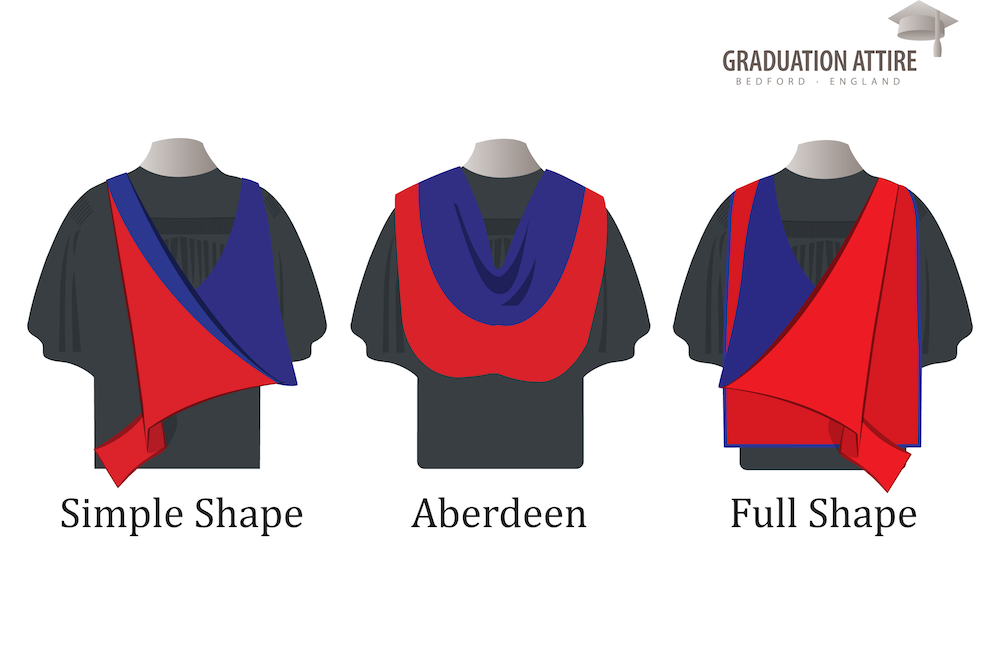The medieval hood consisted of three parts: the cowl, which protected the head; a cape, which covered the shoulders; and the tail, which was long enough to wind around the shoulders like a scarf. However, this was short lived and by 1450, influenced by the forces of popular fashion, it had evolved considerably. One particularly interesting adaptation of the time (known as the chaperon) was to roll up the cape and place it on ones head as if it were a turban (in my opinion a simple but fetching idea, if only it remained today… and fortunately it does, but only as a tiny remnant on a barrister’s gown). Meanwhile, the university hood, still passing through an active state of evolution, had developed a fur lining in the winter months and silk for the summer, a tradition still kept by the Judges of today.

Academic hoods UK
Today hoods, despite the alarming variety displayed by their earlier counterparts, primarily exist in three basic shapes: full (cape, cowl and liripipe), simple (cowl and liripipe) and Aberdeen/CNAA (cape and cowl).